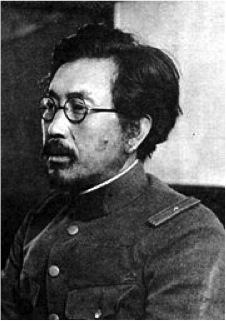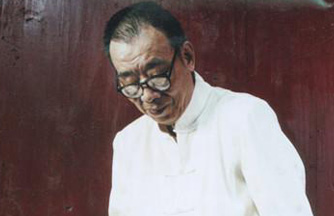Biological & Chemical Warfare
Overview
During the time that the Imperial Japanese Army occupied Manchuria, Japan established biological and chemical warfare units across China. The biological and chemical weapons programs were active from around 1932 until the army's defeat in 1945. These units researched and developed chemical and biological weapons, using human subjects in their experiments. The newly occupied territory was the ideal setting for such activities, as scientists could work with little oversight and could send prisoners to the facilities to serve as the human subjects. In addition, the fact that China was a war zone at the time ensured illegal activities went largely unnoticed by the international community.
ISHII Shiro
The mastermind behind Japan's biological and chemical warfare development was microbiologist and lieutenant general ISHII Shiro. He spent two years between 1928 and 1930 touring the West and learning of their biological and chemical weapons programs, and returned to Japan eager to start his own research. He initially worked in Tokyo, but after touring Manchuria shortly after the invasion, decided to move operations to the occupied territories. In 1932, the Japanese government provided funding for the first of his facilities, code-named 'Unit Togo,' which was located near Harbin in Beiyinhe. Military officers, as well as scientists and doctors from lead Japanese universities and medical schools, were sent to work at the establishment. But the escape of a group of prisoners being used as human subjects at this facility in 1934 led to a local revolt, and Ishii relocated the research to the more isolated Pingfan, 20 kilometers south of Harbin. There he built the Pingfan complex, which would become headquarters to Unit 731, Japan's largest and most notorious biological warfare and human experimentation unit.

Pingfan
At Pingfan and other sites across China, scientists produced biological and chemical agents in large quantities, and invented new ways to use these agents as weapons of mass destruction. They tested the biological and chemical agents on prisoners to study the effects of the agents on humans, to determine survival rates for soldiers exposed to such agents, and to test the effectiveness of their weapons. Human subjects were also used in medical experiments that studied the body's resistance to extreme conditions, such as extreme cold, high pressure, and dehydration. The final phase of the human experimentation involved performing live vivisections of the prisoners without anesthetic to extract their organs for research. The prisoners were then executed by lethal injection, and their bodies burned in large incinerators or buried in nearby mass graves.
Use of Biological and Chemical Weapons
Throughout the war, the Imperial Japanese Army used the biological and chemical weapons it produced against both the opposing forces and against Chinese civilians. The spread of plague and other disease had both short- and long-term effects. In the short term, tens of thousands of people lost their lives and entire villages were nearly wiped out. But there were also long-term effects that continue to haunt victims to this day, including ill health, unhealed wounds, and severe disabilities, not to mention the emotional and psychological trauma of watching your family and community members perish.
Destroying the Evidence
At the end of the war, the Army hastily attempted to get rid of evidence of its biological and chemical warfare programs. It burned down facilities, destroyed records, discarded ammunitions, and, in what can only be seen as a final attack on the Chinese people, the Army released thousands of infected animals and insects. The result would be years more of plague and disease outbreaks in China.
Impunity for War Crimes
Allied forces arrested many of the military officials, scientists, doctors, and nurses that were involved in Unit 731 and other biological and chemical warfare units after Japan's surrender, including ISHII Shiro. Many of them were taken to a pre-trial at the Tokyo Trials that began in 1946. However, all of the defendants connected to the biological and chemical warfare units were given impunity by the US government in exchange for Unit 731's research. The cover-up by the US government was in gross violation of international law and allowed war criminals to walk free, many of whom took up positions of leadership in medical and scientific institutions back in Japan upon their return. Similarly, the Soviet Union held its own trials, known as the Khabarovsk War Crime Trials, in 1949 for twelve members of the Imperial Japanese Army, including six members of Unit 731, who participated in the manufacturing and use of biological weapons during WWII. All were found guilty, but in the end were repatriated to Japan in 1956.
The impunity by the U.S. for these war crimes, as well as the turning of a blind eye by many countries, have set a deplorable precedence for post-conflict transitional justice for war criminals, and have supported Japan's denials of its wartime past. But most importantly, for the victims and survivors of the atrocities, it has meant that justice has not been served.
Testimonies
XU Jiaxie


